Cookware Buying Guide
If you’re updating your kitchenware arsenal, exploring new cuisine, and especially if you’re just getting started, the sheer variety in types of pans can feel paralyzing.
In building this site I’ve spent hundreds of hours researching, testing and writing about pots and pans. And I still feel like I’m just scratching the surface.
Fortunately, beyond my own experiences, I’ve been able to collaborate with a team of professional chefs, cooks and bartenders with decades of combined hands-on experience in a variety of different cuisines and cookware.
Together, we built a resource that I’m quite proud of that can help anyone find the best types of pans, materials and brands for their kitchen.
This Buying Guide consolidates the most important cookware information into a single page, and will help you navigate to a number of resources that explore more detailed topics. Find the most essential things you need to know here, and dig deeper as you like.
Don’t have time to explore? Here are the 7 pieces of essential cookware no kitchen should be without according to one of our chefs.
What Is The Best Cookware?
For every job in the kitchen, there’s a tool that’s right for the job.
How you cook or how many people you typically cook for will have a major impact on which pots and pans are the right fit.
Here are some of the most important questions you can be asking yourself when picking cookware for your kitchen.
Sets Vs. Individual Pieces
For most home chefs, only a few pots and pans will be responsible for 90% of the cooking that gets done. And the fact of the matter is that you can go a long way without a lot of accessories.
There is a certain convenience (and sometimes cost economy) to buying a full set, but in most cases you will be picking up items in a “package deal” that rarely see the stovetop.
Most sets include products of a single brand, line and material. If you’re looking for best performance across your entire cookware collection then it can be beneficial to employ different materials for specific tasks.
One brand may be excellent, for example, for its stainless steel cookware products AND simultaneously below average when it comes to enameled cast iron dutch ovens. If you purchase a set, you get what you get.
Take time in advance to confirm the pieces and materials are actually what you need and want. Even budget-oriented cookware can be expensive.
It is possible to find a screaming deal on a set, but often you’ll be better served in the long run to purchase piece-by-piece.
What Do You Cook?
The types of pots and pans sold today were originally designed with very specific cooking purposes in mind. Take a moment to think about the types of cuisine and recurring dishes you like to cook.
Be specific, if you can.
Think about, and write down, the meals you prepared in the last month. Many home cooks will venture out to try new recipes a few times a month, but most of us tend to come back to the same dishes we know and love.
If you don’t recall which dishes you prepared last month, find a notebook where you can keep a “food journal” over the coming weeks.
Your first cookware purchases would do well to support the 80% of items you make again and again. For example, it’s probably more practical to start with a great daily frying pan before investing in occasional items like an egg poacher.
Check Your Stovetop.
Your heat source matters.
In addition to what you’re cooking, it’s also important to have an idea where you’ll be cooking it. Not all materials perform equally on every type of stove.
For example, induction ranges will only work on pans that contain a ferro-magnetic material like iron and some types of steel.
Some cookware may have temperature limitations, or not be safe to use in the oven. Materials like cast iron will do better at holding a consistent temperature for even cooking when the heat source fluctuates. Cooking over a camp fire where there is little temperature consistency or control is a great example of when this might apply.
Know your heat source, and plan your first purchases appropriately if you need induction cookware or if you’re more likely to use pots and pans on a gas stove or electric glass-top range.
While induction stoves are incredibly convenient, it is worth noting that nonstick induction cookware can be hard to come by.
Portions And Sizing.
Buy for the mouths you are regularly feeding first.
For example, I can tell you from personal experience that it’s not helpful to own a 16″ wok if you are only feeding 2 adults on the regular.
Sure, it’s a nice tool to have around if you are catering to a crowd – but a huge dish is heavy, clumsy and hard to store. Especially when the 12″ model would’ve cut it for 99% of meals.
In most cases, over-sizing a dish from your cooking current habits will cost more money but not add a lot of extra benefit. There are always a few exceptions to any rule, but the vast majority of us would benefit to look at the portions we prepared last month and assume that next month should be (mostly) the same.
Each variety of pot or pan is sized distinctly. Those used to prepare liquid dishes are often labeled in quarts, while solid-centric pans may label by inches diameter instead.
There is no “golden rule” for sizing across every type of pan.
Fortunately, our team provides a detailed guide for each category of products we review. For example, the Dutch oven is one of the most versatile dishes in any kitchen. It can be sized from as small as 1-quart (single serving) to 15.5 quarts (10+ people). See our guide to Le Creuset dutch oven sizes for an example of what I mean.
Sizing is complex, and every kitchen is unique.
The most important thing is to have a good idea about who you’re cooking for most often and start from there.
Storage And Care
For a low-maintenance pan, stainless steel is going to be your best friend.
Stainless steel is very durable, it doesn’t have to be seasoned, and washing is as easy as scrubbing with soapy water, or even throwing in the dishwasher.
Stainless steel also takes time to get used to. It is far from nonstick, and easy to burn food on before you’re accustomed.
Just like stainless steel, every cookware material has its own set of benefits and drawbacks. Nonstick pans will be fragile, while carbon steel requires special seasoning to avoid rust or can’t be washed with soap.
There is no universal silver bullet when it comes to the best pots and pans.
You can only find what’s right for your kitchen, and balance the benefits and tradeoffs of the material you choose to fit your preferences.
Types Of Pans
Have you ever wondered why there are so many different types of pans in a cookware set?
All of the major types of cookware were born out of the need to complete a very specific task, which was often based on the type of cuisine being prepared. Here are the types of pans that you should know. Understand what they’re good at before buying can save a lot of time, money and enhance your enjoyment in the kitchen.
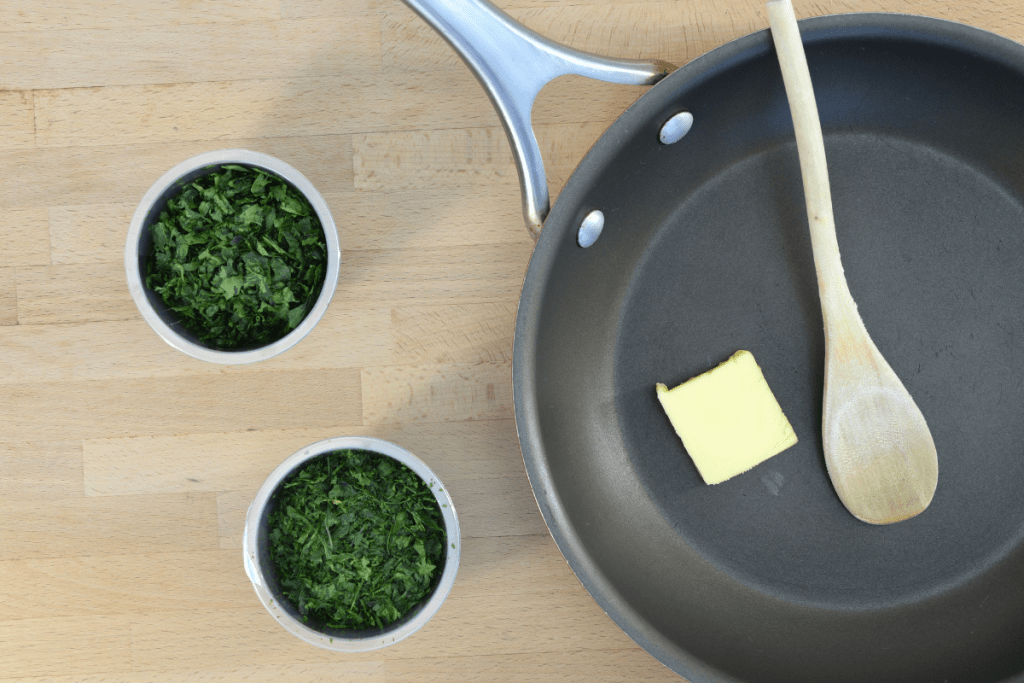
Fry Pan
When you want even cooking or searing, a frying pan is the way to go. Think, eggs, steak, fish, or other whole cuts of meat.
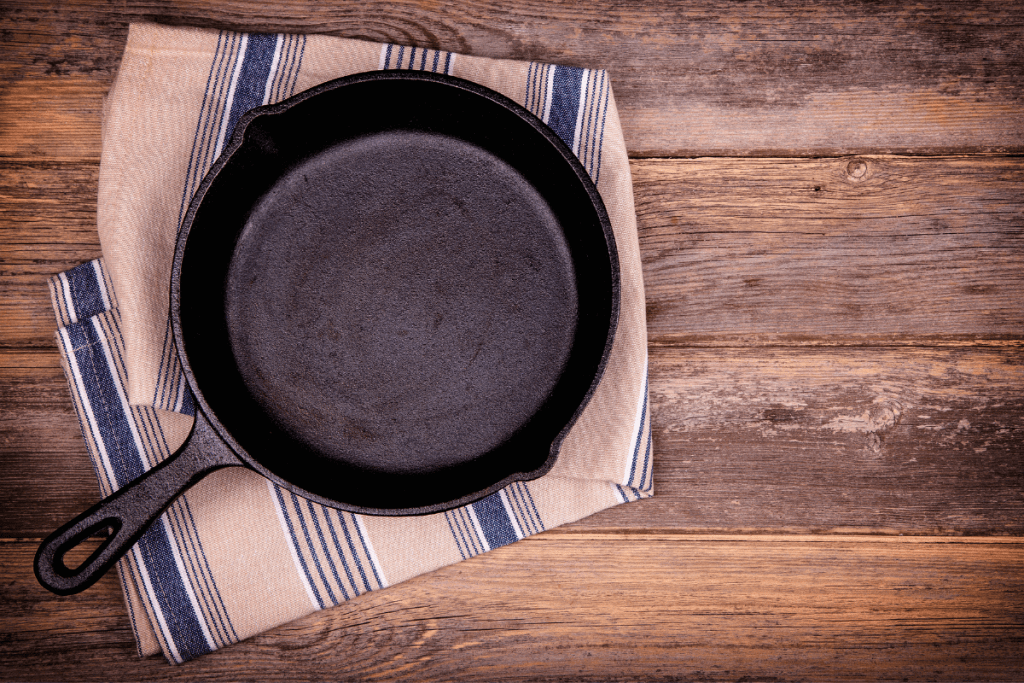
Skillet
It’s similar to a frying pan, only it’s made of cast iron. With a skillet you can sear, bake, sauté, pan-fry, braise, broil, roast and more.
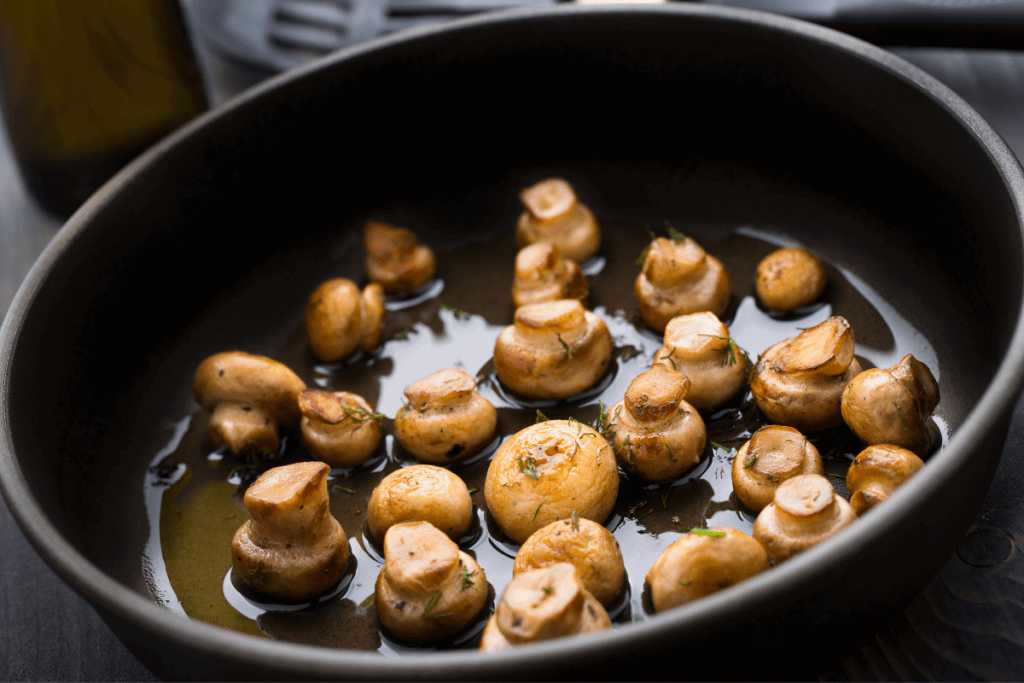
Saute Pan
A saute pan can do most of the functions we use a frying pan for, but the taller sides and lid mean it can also hold more food and handle more tasks.

Saucepan
An excellent choice for simple tasks like boiling eggs and making rice. But saucepans can also be used for delicate sauces or pastry work.
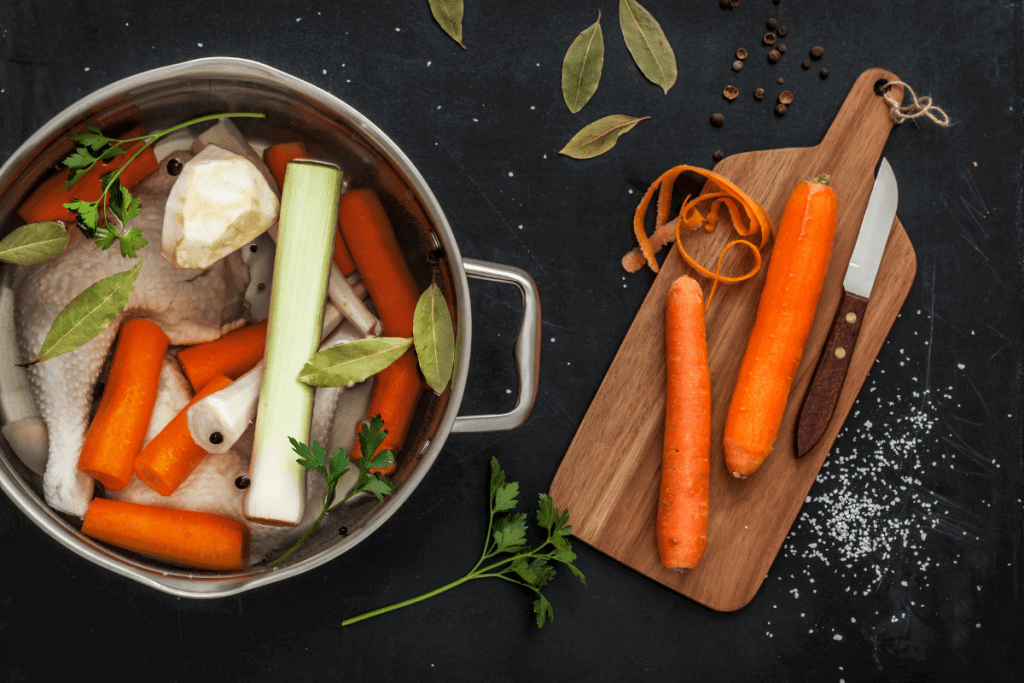
Stock Pot
A stock pot can’t be beat when it comes to large, liquid based recipes or simply boiling water for various cooking tasks like making pasta.

Bamboo Steamer
A great way to cook without using any oil or fat and is the best way to cook many different kinds of dumplings. Bamboo steamer cooks evenly results without drying out food.
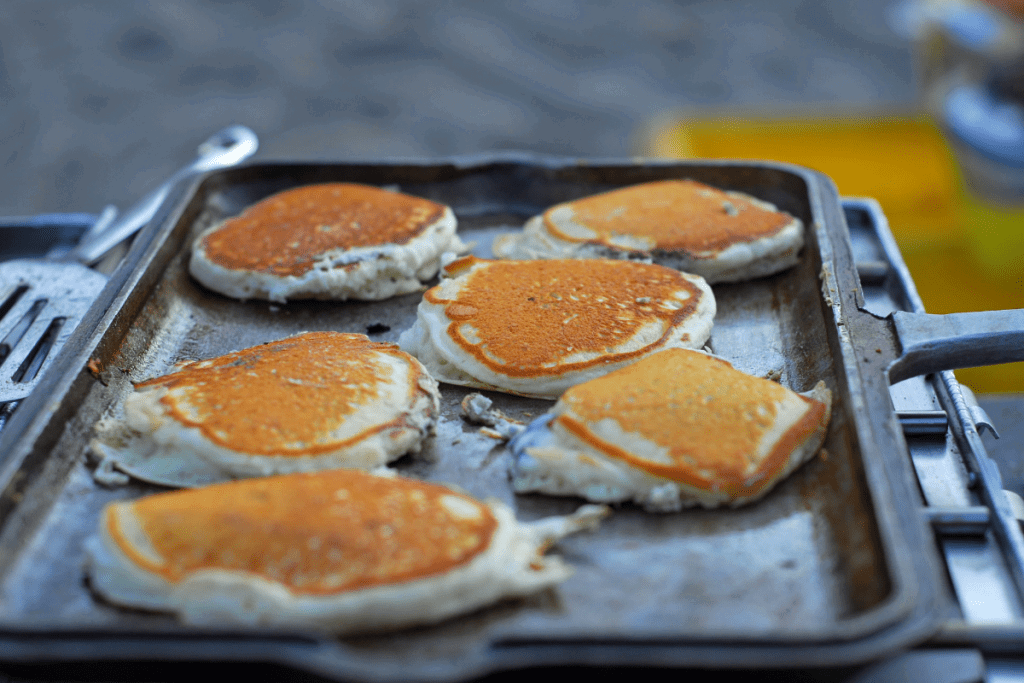
Griddle
Griddles are heavy and a bit clumsy, but nothing beats them for making perfect pancakes and feeding a crowd.

Grill Pan
This is a pan that has raised ridges so that you can “grill” indoors, on the stovetop. This is good for searing meat, vegetables, or panini-style sandwiches.

Wok
If you want the best stir fry possible, there is no substitute for a wok. It’s also good for deep frying, steaming, and quickly reducing sauces.
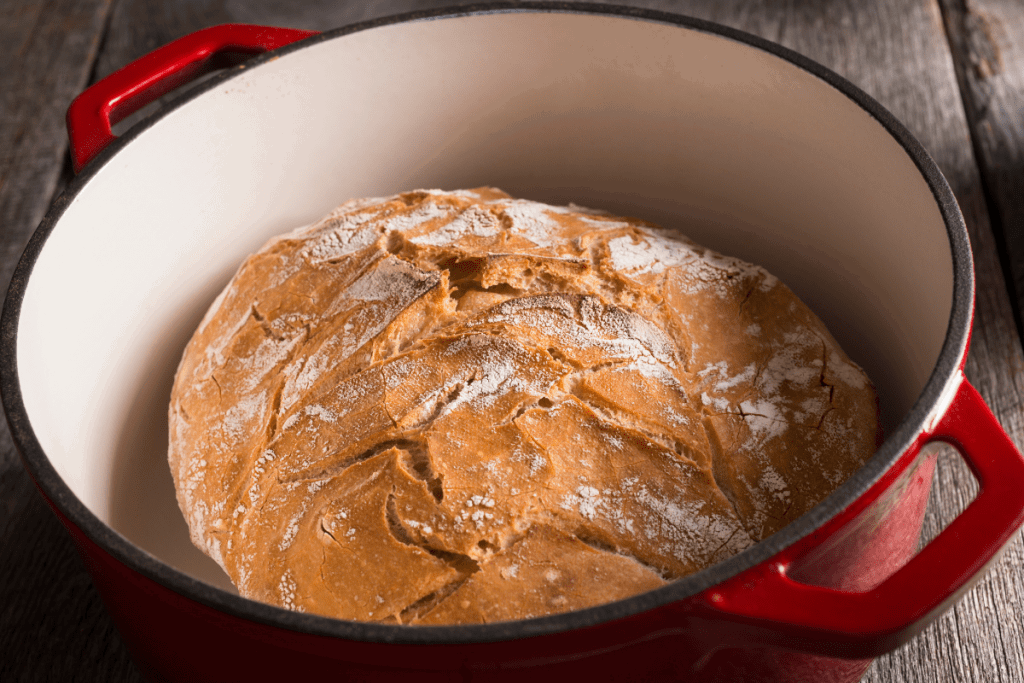
Dutch Oven
Dutch oven is a large pot with a tight fitting lid, and sturdy handles. Use this for soups, stews, braises, deep frying, baking bread, and steaming.

Saucier
A saucier is similar to a saucepan except it has rounded sides instead of straight ones. Great for risotto, oatmeal, and any number of sauces.
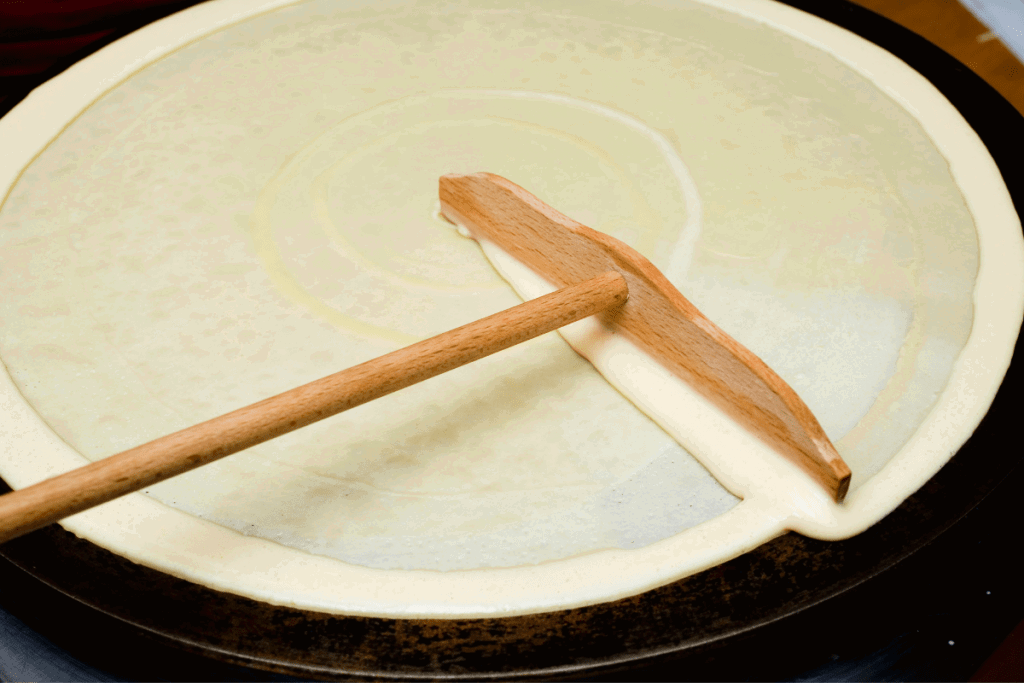
Crepe Pan
These round, flat-bottomed pans have shallow sides. Crepe pans cook thin battered pancakes that are filled with sweet or savory ingredients.
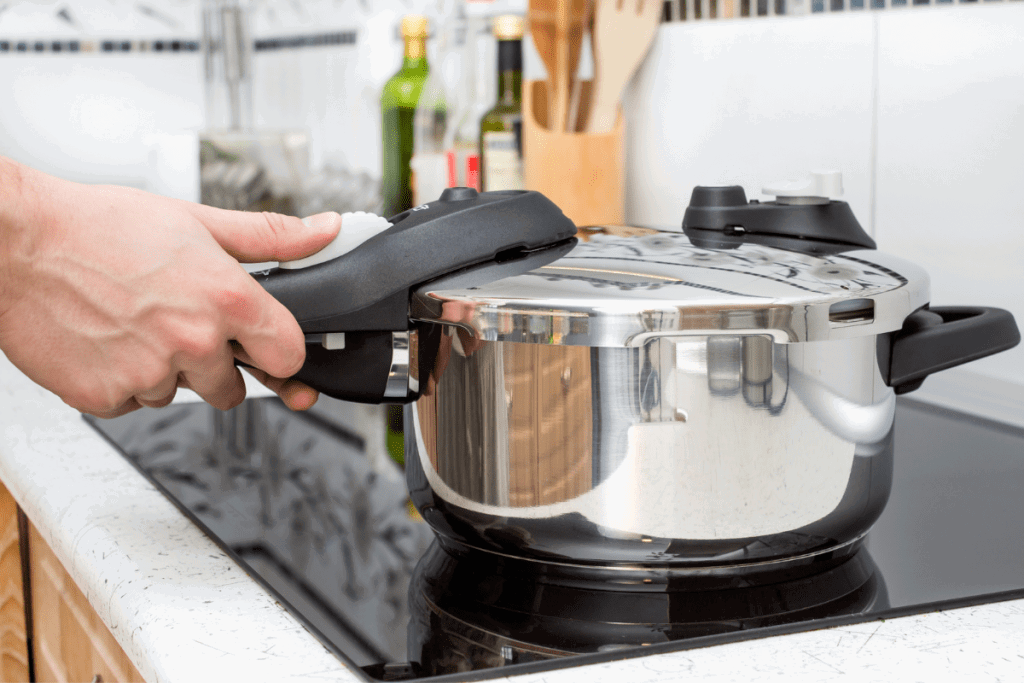
Pressure Cooker
A pressure cooker’s lid locks and seals so that moisture and air can’t escape. This creates high-pressure steam inside which cooks things faster and at a higher temperature than normal. Great for touch meats and dried beans
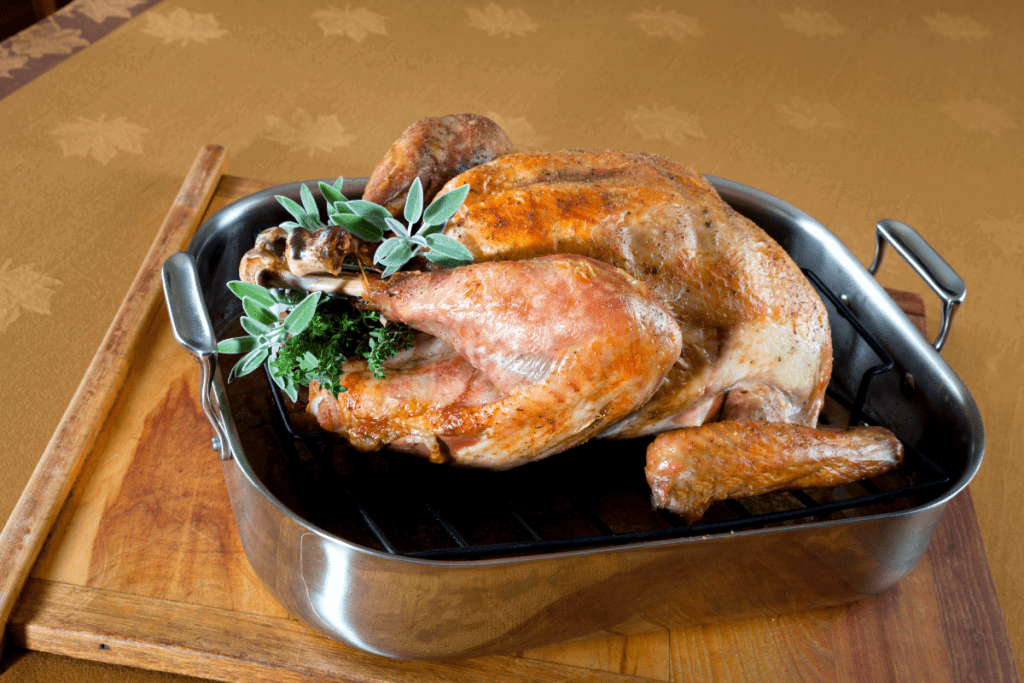
Roasting Pan
A rectangular, metal pan with high sides. These are specifically built for roasting large cuts of meat or whole birds – things like a whole turkey, chicken, or a large prime rib.
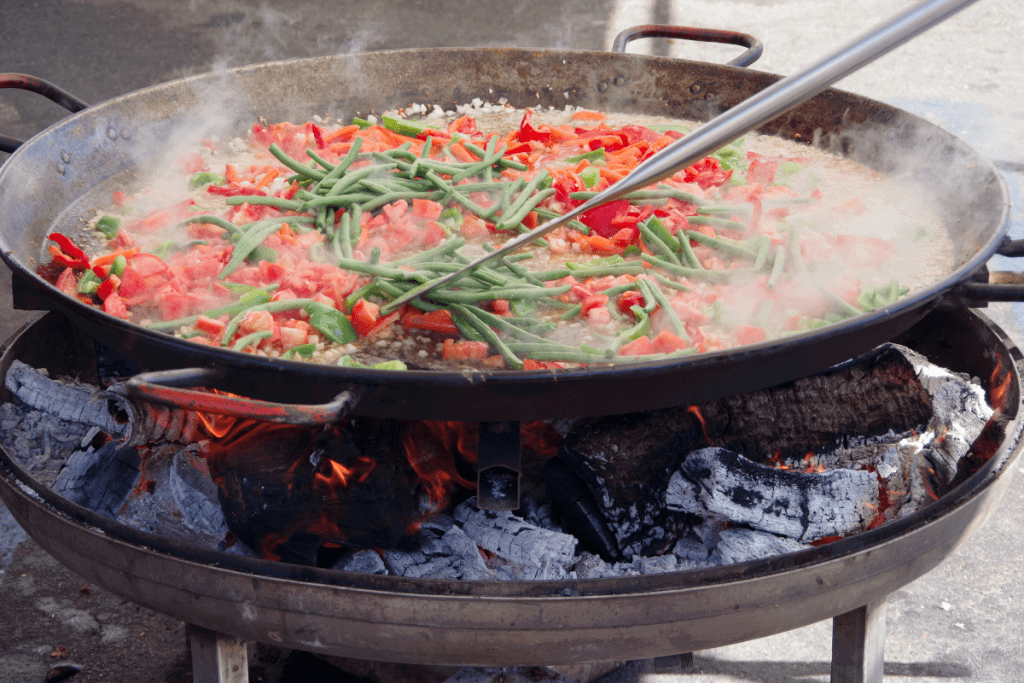
Paella Pan
The wide and shallow pan is designed to saute and caramelize ingredients, as well as reduce liquid quickly. Both of these aspects of a paella pan add a tremendous amount of flavor to the paella.
Best Cookware Materials
Picking a cookware material that works means reflecting on your goals and constraints first. Each material offers unique strengths but may fall short in some areas as well. For example, cast iron may create the best skillet, but that doesn’t mean it will also be the best performing material for all the other types of pans.

Stainless Steel
The most versatile and lowest maintenance cookware around.
The biggest drawback to using stainless steel is that it’s not as user-friendly as some other options like nonstick. It takes some practice and knowledge before you are proficient.
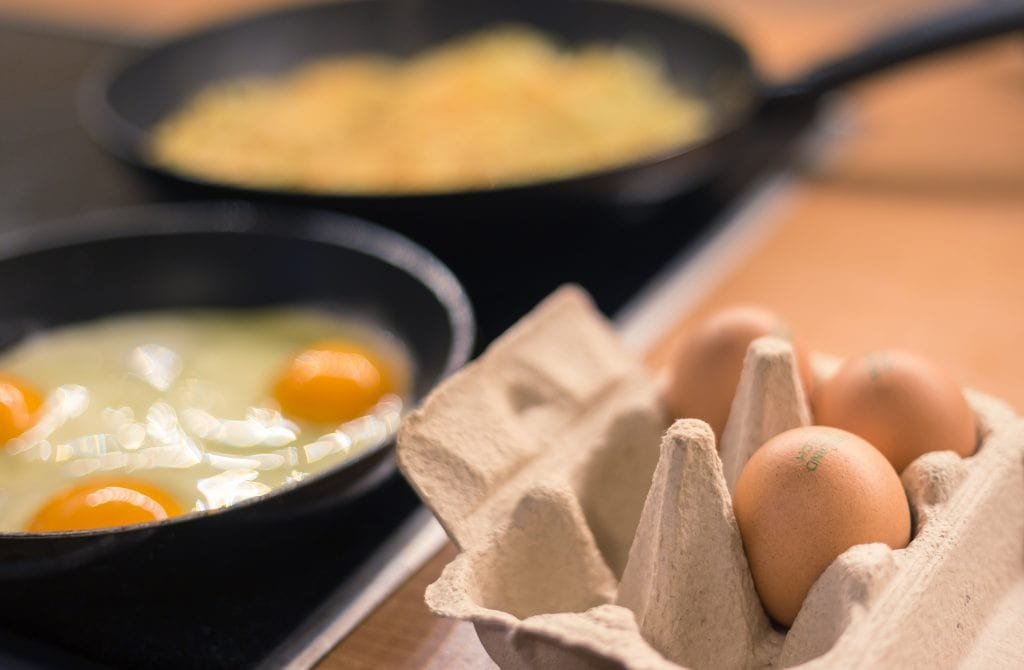
Nonstick
Convenient food release and easy clean-up, nonstick pans require little cooking fat.
The nonstick coating can be harmful if overheated, is prone to scratching or chipping, and typically wears out in under 5 years. Very quickly in some cases. Don’t buy if you own birds.
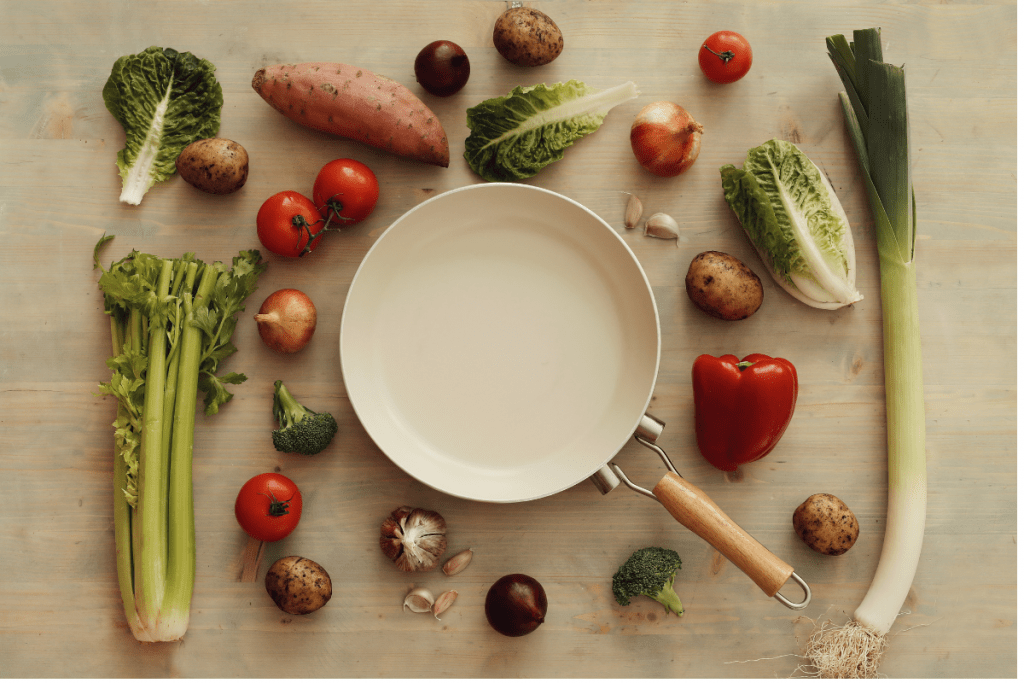
Ceramic
Widely considered as a healthier alternative to traditional nonstick.
Although ceramic pans are often the most affordable option, they also tend to have the lower durability and less effective food release than PTFE-based nonstick cookware.

Cast Iron
Cast iron offers some of the best heat distribution and retention around. Most products are very affordable, and develop natural non-stick over time.
While these pans will last forever, they are also heavy and require some maintenance to keep from rusting.
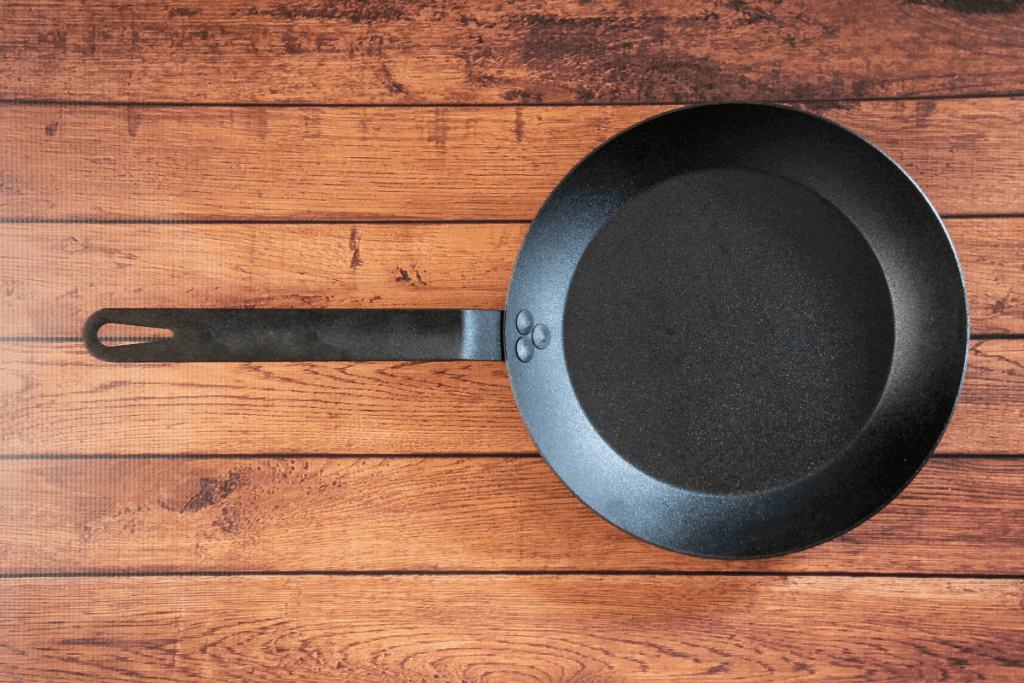
Carbon Steel
Carbon steel has similar durability and nonstick ability to cast iron, but with much lighter weight and a lower profile design.
More expensive than cast iron, and the thinner construction means that it is not as effective at heat retention.
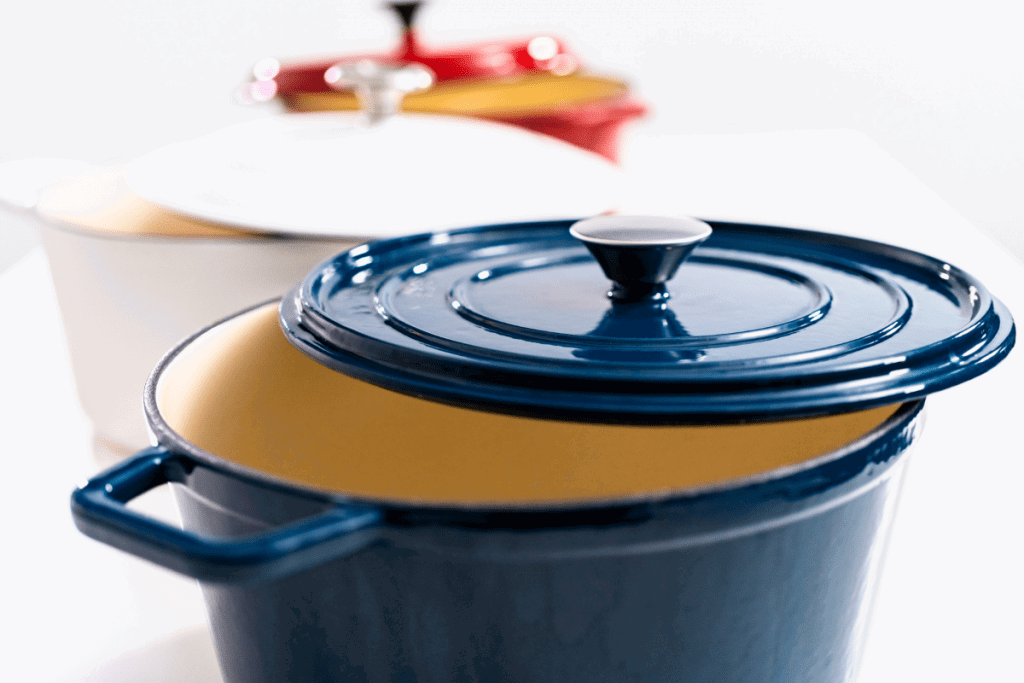
Enameled Cast Iron
All of the benefits of raw cast iron, but you don’t need to season it and the enamel can be washed with soap.
It’s also much more expensive than its uncoated sibling, and the enamel may chip or peal over time.
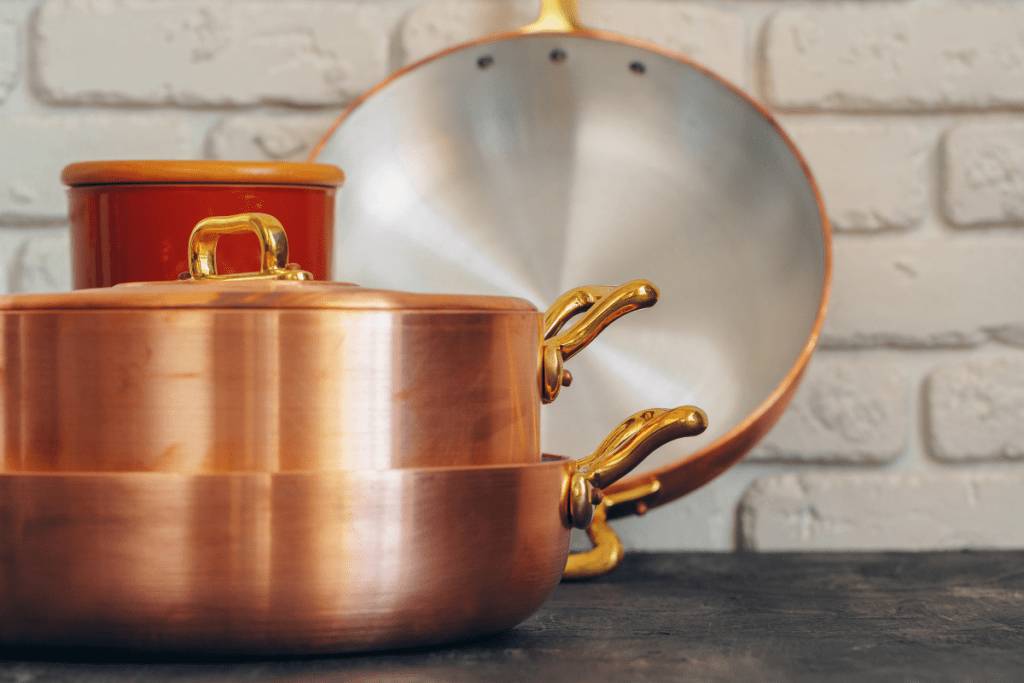
Copper
Copper looks absolutely stunning. It’s also 25x more thermally efficient than stainless steel. This means you can use lower heat while cooking more evenly and with greater control.
It is also (by far) the most expensive cookware material, and requires care to maintain the tin lining that prevents a metal reaction with your food.
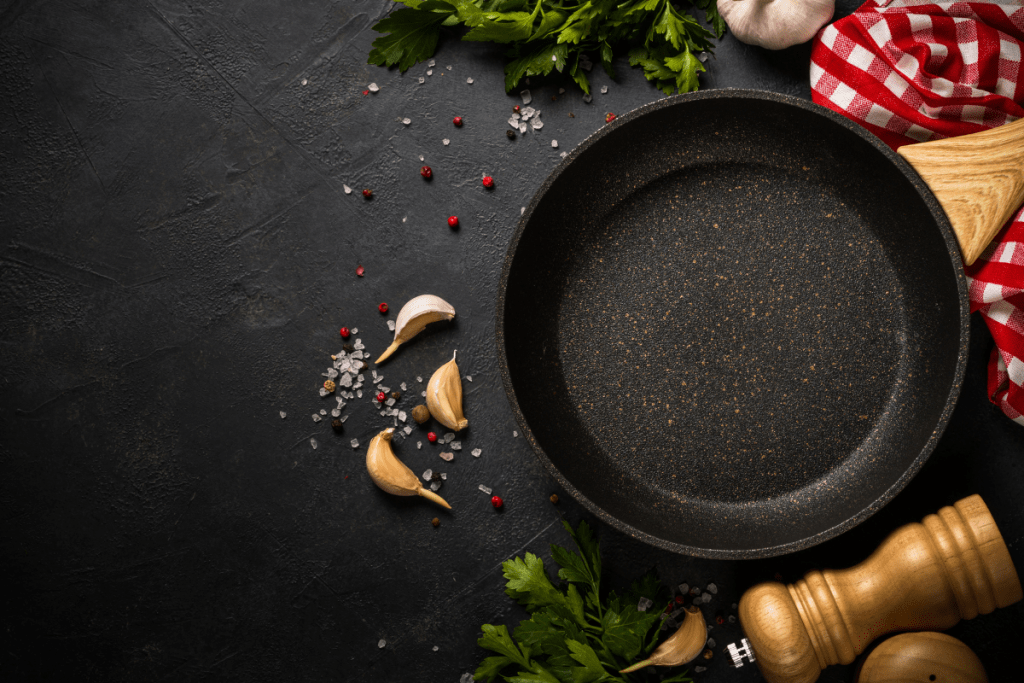
Anodized Aluminum
Aluminum is the most affordable cookware metal, and almost as effective a conductor as Copper.
Warping is a common problem with thin guage aluminum pans. And most anodized cookware is made with a non-stick coating which decreases its durability.
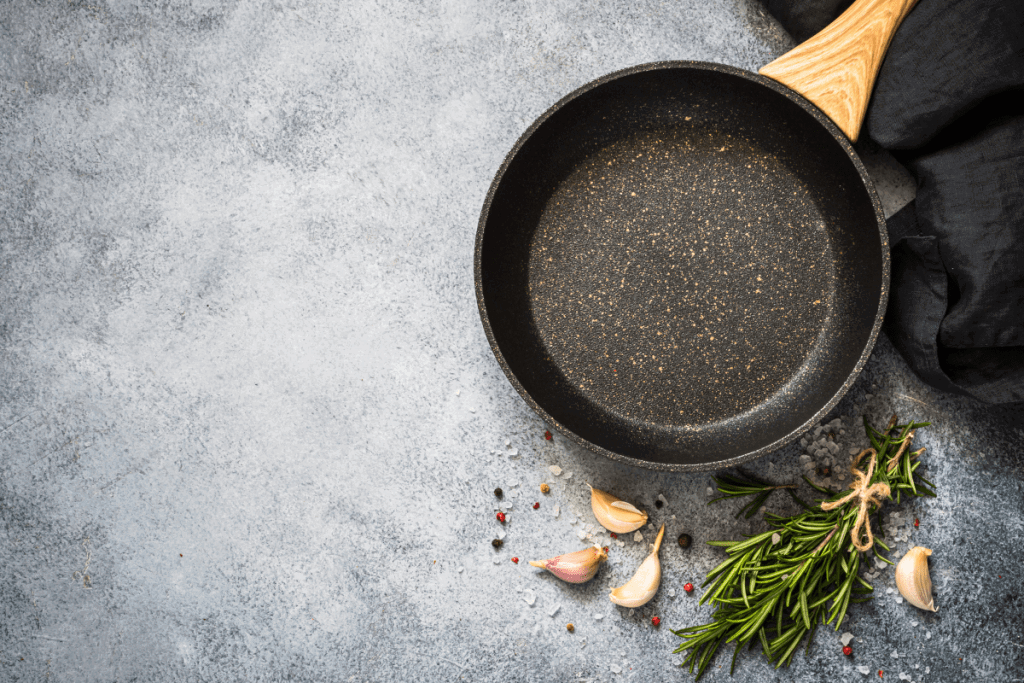
Stone, Diamond, Etc.
You may find products labeled as “Stone, Diamond, Granite, Rock” and so on.
By and large these products are actually traditional nonstick pans using PTFE, with a mineral additive.
Some additives may add incremental benefit to durability or heat transfer, but it’s mostly just marketing.
Best Cookware Brands
There are hundreds, if not thousands, of cookware brands out there. Some are global names already, while others cater to smaller segments of home or pro cooks with hyper-specific interests.
While building an authoritative list of the best cookware brands is something we’re striving for, I’ll be the first to admit it is also a highly subjective exercise.
With that said, here are a few top brands that we think you should know.
All-Clad
The inventors of the original clad stainless steel pots and pans are still the best in the biz. They are also still (mostly) made in the USA.
You’ll find All-Clad’s D3 and D5 lines in many pro kitchens and their luxury Copper Core collection in many aesthetically oriented home kitchens.
Calphalon
Calphalon is another American company that has been making anodized aluminum cookware since the 1960s, like the popular Classic line.
When All-Clad’s patents started to expired in the early 2000s, Calphalon also became a masterful copycat.
They now offer three-layer and five-layer designs similar to All-Clad. But, by outsourcing the production of their products they can charge significantly less.
Le Creuset
Le Creuset makes some of the most durable enameled cast iron in the world.
Our team especially favors the French maker’s Signature Cast Iron Skillet, which is an expensive but generational type kitchen product.
Yes, you absolutely can find a similar and more affordable option by Staub, but it’s hard to match the enamel durability of Le Creuset.
Lodge
Another historic American brand, Lodge has been making cast iron cookware in S Pittsburgh, TN since 1896.
They were among the first to introduce factory-seasoning to their products, and their light-weight Chef Collection skillet is one of the most maneuverable out there.
To date, all of Lodge’s products we tried are low price, high value. They recently started offering enameled dutch ovens to compliment their core line of cast iron skillets.
T-Fal
T-Fal started the nonstick cookware revolution when a French fisherman decided to apply the nonstick Teflon from his fishing lures to his wife’s pots and pans.
Their Ultimate series, reinforced with titanium, offers the best bang for the buck and I think is the way to go for this type of cookware.
While you’ll still find T-Fal’s nonstick pans everywhere, they have also branched out into ceramic cookware recently.
Today, T-Fal is the cornerstone of French conglomerate Groupe SEB’s cookware empire, leading the way for sister brands like WearEver.
GreenPan
hen controversial health data started to surface in the early 2000s about traditional nonstick cookware, GreenPan was the first to market with a PTFE-free alternative.
Along with their sister-brand, GreenLife, this Belgian cookware firm opened up an entire new category for cooks who wanted to find the healthiest cookware.
While it may not be our favorite ceramic frying pan, the branding is awesome, the price is fair and they were pioneers.
Scanpan
If you’re going to use a nonstick pan, it’s worth considering how it was made.
While it’s unlikely that any maker could be considered “environmentally friendly,” the Danish brand Scanpan does incorporate a number of production modalities to minimize the impact of their operation.
They also have an excellent sense of Scandinavian design, as is demonstrated across their CTX line and others.
Swiss Diamond is another maker worth considering if you’re attempting to balance convenience and environmental priorities with nonstick cookware.
Other Brands
Other cookware brands are practically too numerous to mention. There are so many.
Companies like Tramontina or Cuisinart have capitalized on the success of their other kitchenware to introduce knock-off pots and pans.
Celebrity house makers and chefs like Paula Deen, Jet Tila and Martha Stewart have also merchandised their names on convenience oriented lines.
And there are an incredible number of “made for TV” products that feature wild promotional gimics – Red Copper, Copper Chef, and Gotham Steel to name a few.
Our advice is this – stick with the tried and true brands that are trusted by the toughest kitchens.



